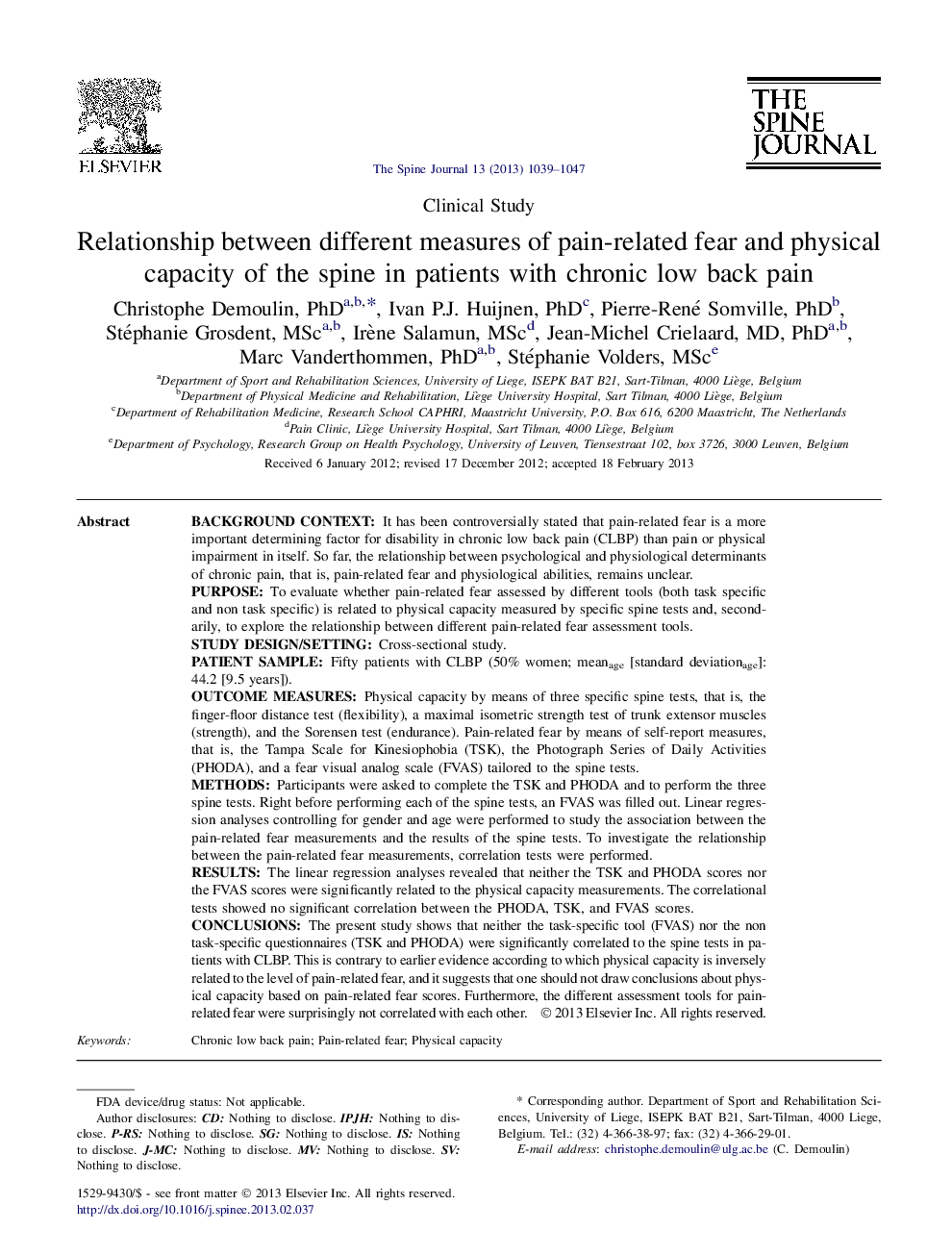| کد مقاله | کد نشریه | سال انتشار | مقاله انگلیسی | نسخه تمام متن |
|---|---|---|---|---|
| 4097623 | 1268594 | 2013 | 9 صفحه PDF | دانلود رایگان |

Background contextIt has been controversially stated that pain-related fear is a more important determining factor for disability in chronic low back pain (CLBP) than pain or physical impairment in itself. So far, the relationship between psychological and physiological determinants of chronic pain, that is, pain-related fear and physiological abilities, remains unclear.PurposeTo evaluate whether pain-related fear assessed by different tools (both task specific and non task specific) is related to physical capacity measured by specific spine tests and, secondarily, to explore the relationship between different pain-related fear assessment tools.Study design/settingCross-sectional study.Patient sampleFifty patients with CLBP (50% women; meanage [standard deviationage]: 44.2 [9.5 years]).Outcome measuresPhysical capacity by means of three specific spine tests, that is, the finger-floor distance test (flexibility), a maximal isometric strength test of trunk extensor muscles (strength), and the Sorensen test (endurance). Pain-related fear by means of self-report measures, that is, the Tampa Scale for Kinesiophobia (TSK), the Photograph Series of Daily Activities (PHODA), and a fear visual analog scale (FVAS) tailored to the spine tests.MethodsParticipants were asked to complete the TSK and PHODA and to perform the three spine tests. Right before performing each of the spine tests, an FVAS was filled out. Linear regression analyses controlling for gender and age were performed to study the association between the pain-related fear measurements and the results of the spine tests. To investigate the relationship between the pain-related fear measurements, correlation tests were performed.ResultsThe linear regression analyses revealed that neither the TSK and PHODA scores nor the FVAS scores were significantly related to the physical capacity measurements. The correlational tests showed no significant correlation between the PHODA, TSK, and FVAS scores.ConclusionsThe present study shows that neither the task-specific tool (FVAS) nor the non task-specific questionnaires (TSK and PHODA) were significantly correlated to the spine tests in patients with CLBP. This is contrary to earlier evidence according to which physical capacity is inversely related to the level of pain-related fear, and it suggests that one should not draw conclusions about physical capacity based on pain-related fear scores. Furthermore, the different assessment tools for pain-related fear were surprisingly not correlated with each other.
Journal: The Spine Journal - Volume 13, Issue 9, September 2013, Pages 1039–1047